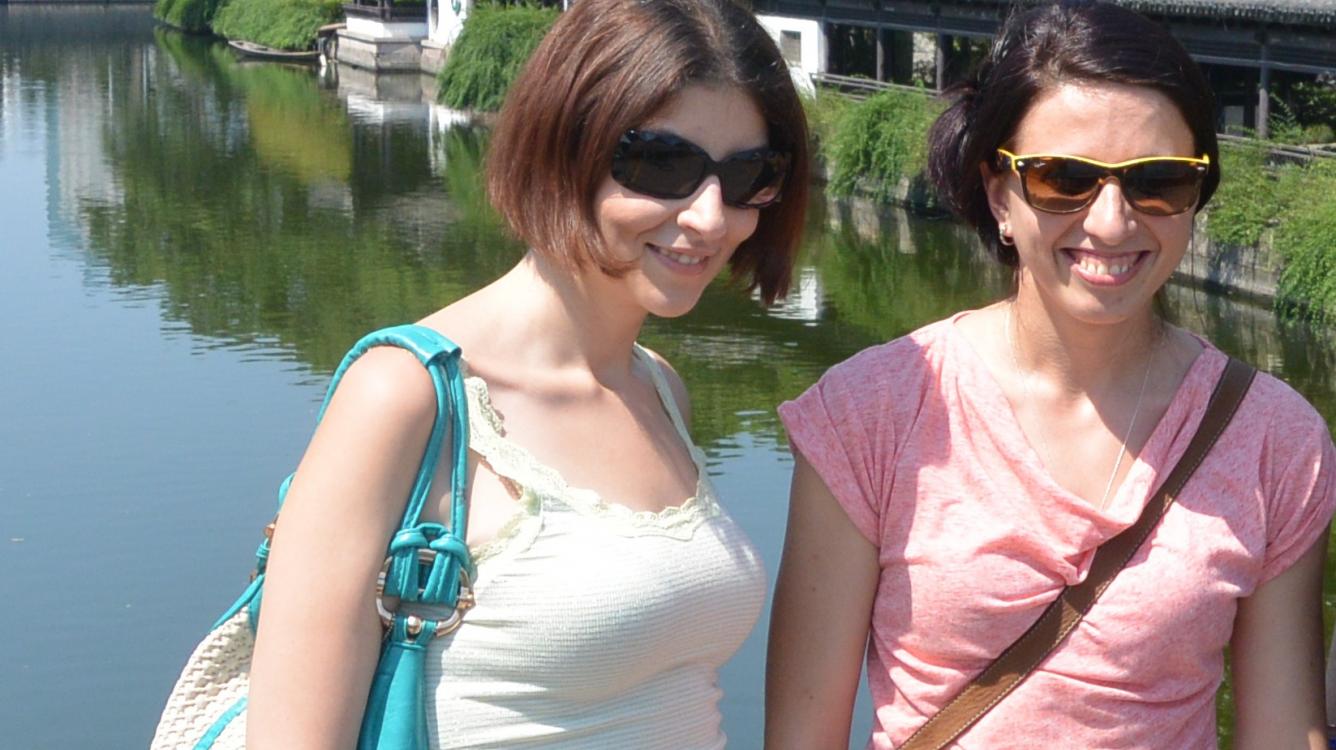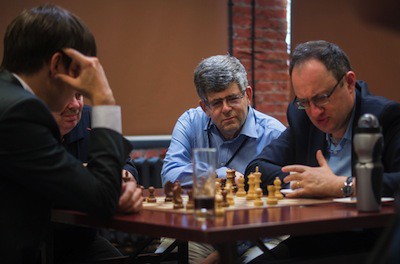
A Farewell!
My favorite writer Hemingway, in his excellent "Moveable Feast," wrote about starting a day of writing: "All you have to do is write one true sentence. Write the truest sentence that you know."
This advice came to my mind as I neared the time to write my last article for my weekly Friday column for Chess.com. And the truest sentence that comes to my mind is: I enjoyed writing and working with Chess.com. We have a wonderful community here and I would like to thank the readers and the followers of my column. Your input and feedback motivated me to come up with new ideas, your positive attitude encouraged me to become a better player. Thank you!

Today I will brush through the topics I have covered over the last five years with 250 articles. I would also highlight some of my favorite articles, and give more insight of why I chose to write about the topic. I will try to go in chronological order. Lets dig into history!
On February 27, 2009 my first article for Chess.com was published "How Bad is a Bad Bishop?". Here is a bit of info on how it came to life. I had the tournament of my life a few months before and was deeply impressed by a post-mortem analysis with GM Kachieshvili. He explained to me why a bishop on g2 in the following position is not a bad piece. Back then this was a revelation but now it makes sense. Having two bishops is an advantage. Black's only plan is to undermine White on the light squares, hence the Bg2 will be handy in countering this plan.
Every year I wrote a preview and a report on my event of the year - the U.S. Women's Championship. I played in the last, I cannot remember how many, maybe eight or nine Championships and it was fun reporting on these events. The first few articles covering this topic back from 2009-2010 were highly personal, even overly personal as this example shows. I guess I was younger and less experienced. The Championship is still a big event for me but now it is just part of a yearly routine and I don't have sleepless nights in anticipation of it. A memorable moment from the Championship is the endgame against another Chess.com contributor, WGM Tatev Abrahamyan, that I won.
---

Rivals at the chess board; friends in life. Me and Tatev enjoying a sunny day during the USA - China match. Ningbo, China, August 2013.
Speaking of endgames, for a year or more my column was an endgame column. Let me tell you every time I misplay an endgame my coach wonders how could I do that, since I write articles on endgames? Well, I haven't done that in a while but it seems many Chess.com readers remember me as an endgame columnist.
How did it start? Back in the days when IM David Pruess was in charge of the columnists, he suggested that it would be a good idea if I improve my endgames through writing about them. The idea was that I would play an endgame against my coach or David and then switch the sides and play it again, analyze it, share the ideas with the opponent and write about it. It was a grand idea and an ambitious one! It is a bit time-consuming as one such session can last for hours but I did manage to write a few articles by sticking to this format.
Playing them out helped with understanding them better and then explaining in a concise way here. And now looking back it was so much fun!! Here is my game with David that was featured in this article, where David first chose to defend with White:
These series of articles helped me with endgames significantly and hopefully you, the readers, benefited from them too. I had a column on planning, exchanges, best moves never played, endgames, and I basically covered the whole spectrum of chess. In later years I realized that it is better to write a series on a given topic rather than individual articles.
I would choose a topic - "intuition" for example - and write five to six articles about it until I felt that the most aspects of the topic are covered. Also it gave me a chance to cover some ideas suggested by readers in a comments section. Some of my favorite series are "Converting Advantage According to Kramnik" and "Positional Methods From Carlsen's Play."
Kramnik is probably the best in the world when it comes to converting an advantage. I thought we should aim to learn from the best - hence the series of articles that I think are very constructive. A column about Carlsen - who wouldn't want to read about the World Champion? It was too tempting of a topic to avoid. Everyone is trying to uncover his mystique, and I had to write an article about his play being nettlesome.

GM Magnus Carlsen signing autographs (photo Mike Klein, Chess.com)
Some of the articles were motivated by great coach's advice. For example, I am a big fan of Mark Dvoretsky's school of chess thought. I consider him to be one of the best coaches in the world.Nnaturally, I wanted to share with you the examples I learned from and thought would be useful for your chess improvement too. Here I shared a method that helped me to improve my game and which is recommended by Dvoretsky: creating a library with "positional pictures" and review them frequently. Speaking of coaches, Dorfman's "The Method in Chess" did resonate with me too and I had to dedicate at least an article to dig into some of his ideas.
My most-read article is probably my best-named one - "A Visit from the Queenless Squad," the title of which is inspired by an excellent book from Jennifer Egan "A Visit from the Goon Squad," although the comparison between the two ends with the title.

As for my favorite articles, the ideas usually came from outside of chess and I used chess as a tool to shape the idea. Malcom Gladwell's controversial and deeply intriguing works served as an inspiration for several articles. In "On Botvinnik, Choking and Superstar Pressure" I explored an idea of explicit learning and superstar effect from Gladwell's "The Art of Failure." Choking is something I had to deal with throughout my competitive career. In part I further explored this idea with a practical example of my game vs. Nakamura. I mention his 10,000-hour rule and the importance of deliberate practice applied in context to chess here.
In another article I tried to draw a parallel between tennis and chess players. This was inspired by David Foster Wallace and his discussions about what is going on in the mind of a great tennis player at a critical moment - "nothing at all". I cannot mention all of the articles here that are my favorite but you get an idea. These articles were not as useful from technical chess perspective but were designed to address the importance of psychological aspects in practical chess.
In conclusion, I do hope you enjoyed some of the articles and they helped you to improve your chess. As for the reasons to leave I am afraid I got a lot of inquiries and owe you an explanation. Currently, most of my time is dedicated for an academic career I am pursuing, and given the time limit it would be hard to deliver high-quality material here weekly. Once again, I would like to thank all the Chess.com staff, my editors, and most of all you, the readers!



